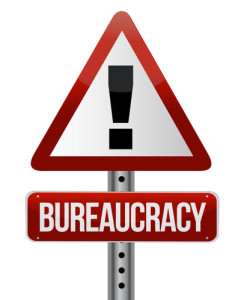BBG Watch OPINION
Broadcasting Board of Governors Information War Lost: Hand Me A Shovel, Part Two
By The Federalist
Broadcasting Board of Governors (BBG) Chief Executive Officer (CEO) John Lansing is learning that applied terminology to the agency…
- “Dysfunctional” (Heritage Foundation scholar Helle C. Dale)
- “Practically Defunct” (Hillary Clinton)
- “Broken” (US statesmen, diplomats, media experts and journalists interviewed by former BBG member S. Enders Wimbush and former Radio Free Europe / Radio Liberty executive Elizabeth M. Portale)
- “Truly Rudderless” or Leaderless (Chairman of the House Foreign Affairs Committee, Rep. Ed Royce)
…is not mere rhetoric.
It’s real.
On Monday, February 8, 2016, Mr. Lansing issued a memorandum. It reads in part:
“Within the last two months, BBG has been impacted by two serious emergencies: The GSA-caused power failure in December that disrupted our transmissions worldwide and the recent snowstorm that hit Washington (emphasis added)…
These events remind us how vulnerable we can be in time of emergency, and they have convinced me of the need for our agency to dedicate additional resources to develop contingency plans to ensure our work can continue under such circumstances…
The federal government expects us to develop continuity of operations plans (COOP) to implement in times of emergency.”
Lansing goes on to say that he has detailed Mark Prahl, Voice of America (VOA) Associate Director of Broadcast Operations to accept a four-month detail, reporting to Andre Mendes to analyze existing continuity of operations plans.
An interesting choice of words, “asking” someone to “accept” a detail. Kind of like making an offer someone can’t refuse – but maybe wish they could.
The Blame Game
From an external perspective, blaming the General Services Administration (GSA) for the power failure is a bit too convenient. The GSA or a GSA contractor could have cut an electrical cable, but the reason the Broadcasting Board of Governors spends 34% of its entire budget on the International Broadcasting Bureau (IBB) is to foresee and deal with such emergencies. It is difficult to imagine that under the right BBG/IBB management and supervision, the effected systems would remain down for a substantial amount of time, as they did.
The first thing that comes to mind is: where’s the back-up?
The agency does have back-up generators. They are (or used to be) tested regularly. One large mobile generator is parked in the Cohen Building parking lot.
Andre Mendes has stated that he would produce a report and explanation on the power failure. On its face, the choice of wording in Lansing’s memo gives one the distinct impression that the spin cycle is in effect: attempting to deflect attention to what might be more penetrative questions about preventive measures that should have been in place to overcome a major power failure.
For Mr. Lansing, it would be useful to hear the GSA explanation for the power interruption and not rely solely on people within the agency management structure.
If/or when Mr. Mendes makes his report, we suspect it will be one of those acronym-laced pontifications that tells people nothing.
Mother Nature Takes Charge
The snowstorm raises a number of other issues.
We can begin by saying this agency has not and up to this point does not have an effective weather emergency plan, particularly one in which major and substantial disruptions to outside infrastructure were to occur. This past snowstorm is a perfect example.
As we have stated before, if you were inside the Cohen Building in the late January 2016 scenario, you were “stranded in place.”
There are no pre-stocked, secured food and water supplies. The building cafeteria shuts down on Friday afternoons and doesn’t reopen until the following Monday. In this case, with the Federal government shut down for the Monday and Tuesday following the storm, the cafeteria was out of action for at least four days. Relying on vending machines for a similar amount of time is ludicrous though not surprising with an agency that treats its employees almost as an afterthought.
COOP Implementation?
Following the horrific events of September 11, 2001, the United States Government undertook a massive effort to disperse concentrated operations away from Washington, DC. This included what became the Defense Department base realignment plan (“BRAC”) and similar actions in the civilian departments reflected in the Continuity of Operations (“COOP”) directive.
For the BBG, a somewhat symbolic gesture toward COOP was the installation of a facility on Federal property many miles from the Cohen Building.
This facility is not staffed on a regular basis. We do not know if maintenance on the facility is performed regularly by agency employees or others.
Depending on the type of emergency, it is rather unlikely that agency personnel could redeploy to the facility in any kind of an organized and timely manner. Remember what this agency is (dysfunctional, etc…).
The agency does maintain some smaller domestic facilities (relative in size to the Cohen Building), including locations in a couple of major U.S. cities. At the same time, it is not likely that these bureaus could seamlessly take over all VOA broadcast programs and maintain the agency’s regular broadcast schedule.
And there would also be additional continuity issues should VOA transmission sites be taken offline.
Ground Zero for the agency has been, is now and will continue to be the Cohen Building. At the end of the day, the best that Lansing can do is improve the agency’s ability to sustain itself and its workforce for protracted occurrences outside the norm, especially when critical infrastructure services outside the Cohen Building are unavailable.
Mr. Lansing should ask some pointed questions about the agency’s COOP facility and what usefulness it has. To outward appearances, it has virtually none.
Make no mistake about it: if Mr. Lansing is serious about looking after the agency’s staff and its operations, it will require substantial planning and funding to support it – funding that cannot be pilfered to cover up the agency’s failings in other areas and planning that appears to be presently nonexistent.
All of this should be food for thought for Mr. Lansing as a second significant snowstorm (by DC standards) hit the Washington area on Monday, February 15, 2016.
A Perfect Storm of Another Nature
The unexpected passing of Supreme Court Justice Antonin Scalia on Saturday, February 13, 2016 is a matter of great importance in the American system of law and government, with potentially far-ranging consequences.
President Obama has stated that he intends to make a nomination. This is not a simple process and is subject to great scrutiny, debate and Senate confirmation.
What makes the situation even more tense in the polarized American political climate is that the presidential election season is in full swing, with primaries underway in advance of the summer political conventions and the November national general election.
In some quarters, there is the view that the matter of nomination, confirmation and appointment of a new Supreme Court justice should be the purview of whoever is elected as the next president of the United States, be it Democrat or Republican.
A new Supreme Court justice and the November 2016 national election will occupy a great deal of political and public attention in the months to come.
For the BBG, what this means is that the agency and its many close-to-insolvable problems gets pushed further down the national priority list in both the executive and legislative branches of government.
No one can tell where this agency will figure with the next administration. Lack of attention and effective remedial action within the executive branch over the past eight years tells us this agency does not sit high on the list of national priorities, without regard to the political rhetoric declaring the agency’s importance. That is not likely to change in 2017 or longer, keeping in mind that the Obama administration has set the outline of federal budget priorities for FY2017 before the next administration takes office.
The White House budget request symbolically represents a fiscal “wish list” developed by the administration. This is not to trivialize the process. Many trillions of dollars are involved. At the same time, the Congress often has a different view of funding priorities from those of the White House. Some of those views are politically driven. Others are a reflection of the dynamics between domestic and international spending.
White House budget requests for the BBG have been hovering below $800-million dollars for some time adjusted for inflation or other monetary fluctuations.
Look at the request as a line item in the larger Federal budget. Given the perpetual state of dysfunction this agency represents, one of the uses this figure has is locking in funding (pending congressional authorization) for whatever might be coming in the future for the agency and its structuring. Congress still wants the agency reformed. Legislation proposing reform is written though not passed. It is likely that the legislation will be reintroduced if not passed, adjusted for whatever additional maladies arise with the agency.
Purveyors of the status quo inside the Cohen Building are quite happy to see the legislation sit in limbo allowing them to maintain their “business as usual” posture. It’s their way of hoisting the middle finger to the Congress and the American taxpayers. Make no mistake about it: this is a malevolent bureaucracy that revels in lack of accountability.
Anything that delays an accounting of its senior officials for the sordid state of affairs inside the Cohen Building would be to their liking as these delays are often as not caused by greater issues of national importance. A failed agency, of little or diminishing consequence pales in comparison to the matter of a new Supreme Court justice and the coming national election.
Most Americans are likely to be similarly disposed.
More to come.
The Federalist
February 2016


Comments are closed.